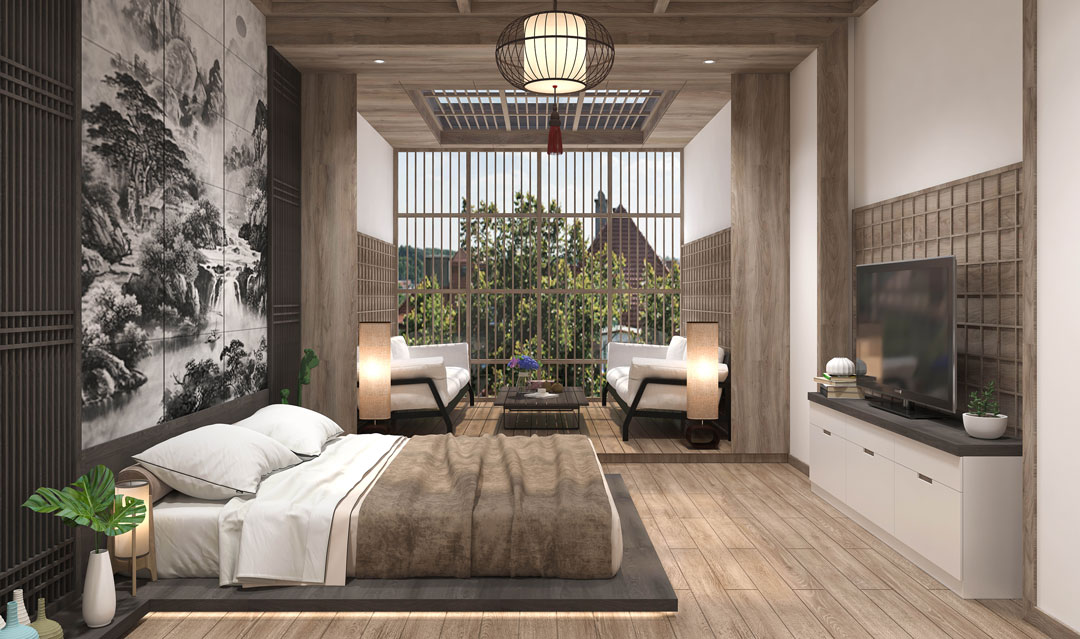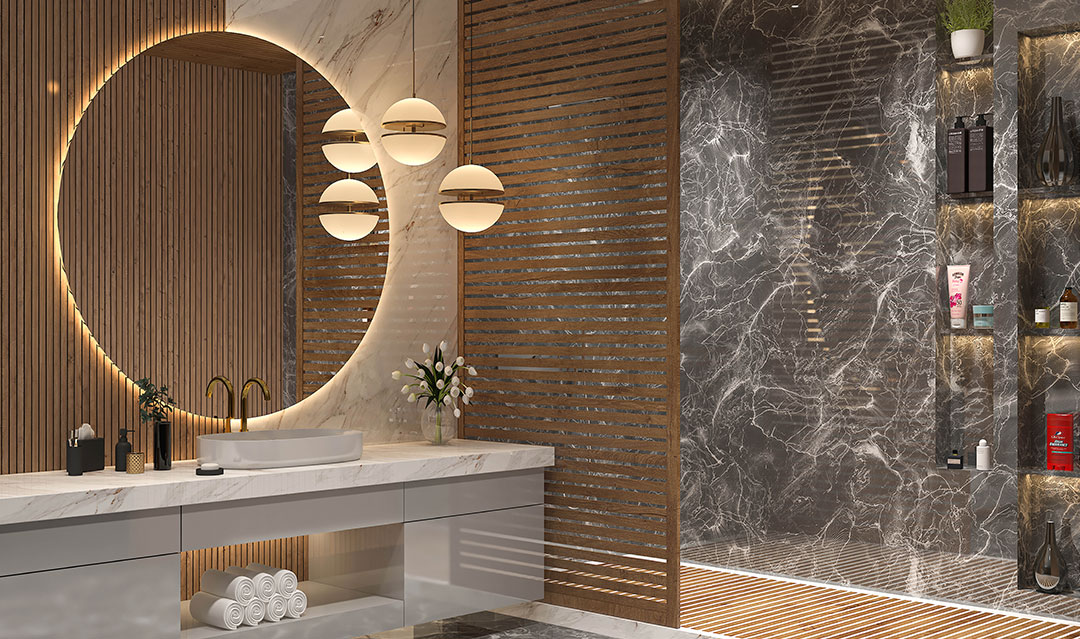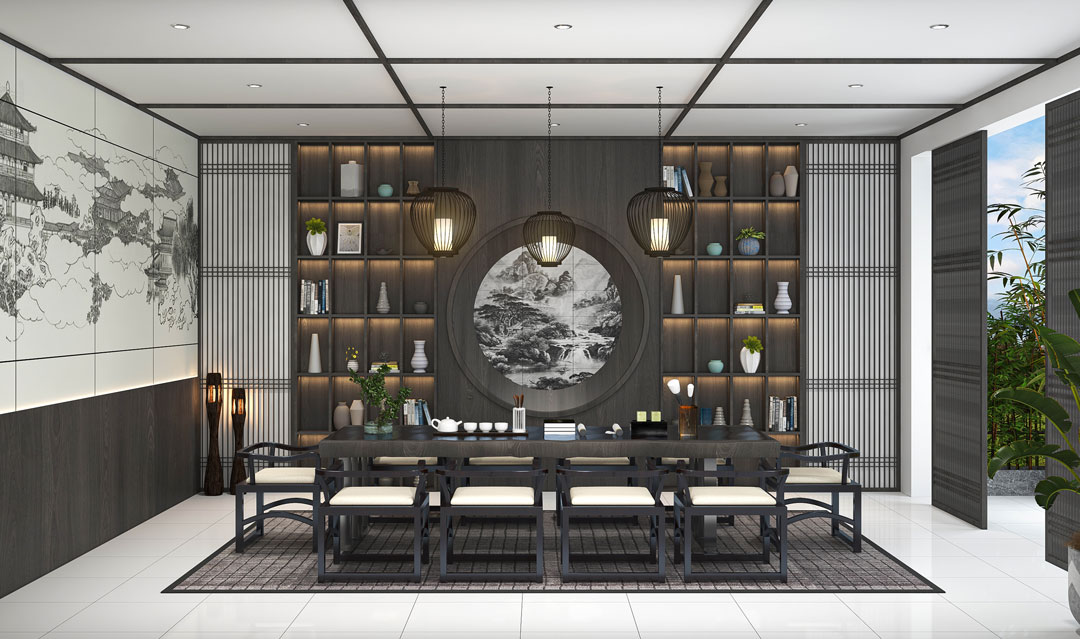Japanese design thrives on minimalism, which is deeply rooted in natural elements. Line, form, space, light, and material make up the most essential element of the design style. Aesthetically, the Japanese design is clean and uncluttered, with balanced elements and materials, geometry and nature of natural beauty. The Zen philosophy is evident and allows an organic flow between the structure's interior and exterior. A simple, structured, minimal design awaits!
Japanese INTERIOR DESIGN SERVICE WITH TRANSPARENCY
Facts & Figures

FLOORING
Japanese design takes a very grounded approach that is rooted in minimalism. As the entire design outlook is pretty neutral and embedded in clutter-free space, the flooring is also a reflection of that style. It is mostly wood or grey stone tile, which is in line with the colour palette of the design. This type of flooring also compliments the clutter-free approach.

Furnishing
Japanese interiors are not furniture-filled as the love for space calls for a more simple look. Japanese furniture is known to be a little low to the ground, with simple side tables and frames. Natural materials find their way into the furnishing and are usually aesthetically clean and minimal. Don't be surprised to see low furniture and floors being used as sitting spaces. Minimalism flows right from the start to the end!

MATERIAL
Natural elements are essential in Japanese design. As the style is deeply rooted in nature and awareness of the natural beauty, the inside mimics this accurately. Large windows, glass doors, straw carpers, and wood furniture are just some of the basic elements of the minimalist design. Indoor plants like Bonsai trees and ferns are also very prominent to accentuate the overall look of the design.

COLOR PALETTE
The Japanese design colour scheme is very neutral and inspired by nature. There is a dominance of restrained light tones like cream, light beige, and milky. These shades are largely found on walls, furniture, and fabrics. Greystones, brown wooden elements and natural green are largely found in a Japanese design style. Simplicity is the key when choosing the colour palette.

LIGHTING
Light is an essential characteristic of Japanese aesthetics. The Zen philosophy believes that different kinds of lights can create a different atmosphere in the room. The Japanese style mostly uses pendant lights or chandeliers and lamps made from paper, glue, and bamboo. The design style is constructed around natural light and material. Don't be surprised to see a lot of natural light in the Japanese aesthetic!
EXPLORE HOW STUVITA WORKS
Process Flow
-
Ideate your Expectation
- Get in touch with our designers and express your desired design look and budget
-
Design Conceptualization
- Our team comes over to assess the space and area
- The design team combines your idea with functionality to create a comfortable luxurious living
- Witness the designs in 3D
-
Documentation
- We take your review and approval before finalizing
- 3D Design is concluded with fine details
- Drawing documentation and estimate
-
Plan in Action
- We carefully make a schedule to deliver your desired space on time
- Complete on-site coordination and reporting
- Receive designer assistance on decor and setup
- Designs go through a quality check and are shipped to the new space
-
The Final Touch
- We take your final review and opinion.
- Revision and Improvements are scheduled as per the feedback.
- And the space is ready to be moved into!
FREQUENTLY ASKED QUESTION
Faq
Japanese Cypress, also known as Hinoki, is famously used in traditional Japanese interior design. The wood is carefully picked to be of the highest quality and frequently seasoned.
The modern Japanese interior is functional, minimal, and flexible. There is more room to move around, without any unnecessary clutter. The rooms are spacious, with a lot of natural elements that give modern life a beautiful edge.
In Japanese interior design, the focus is usually drawn to a wall. However, the wallpaper is decided based on the various ornaments, drawings, and colours for a given living area.






